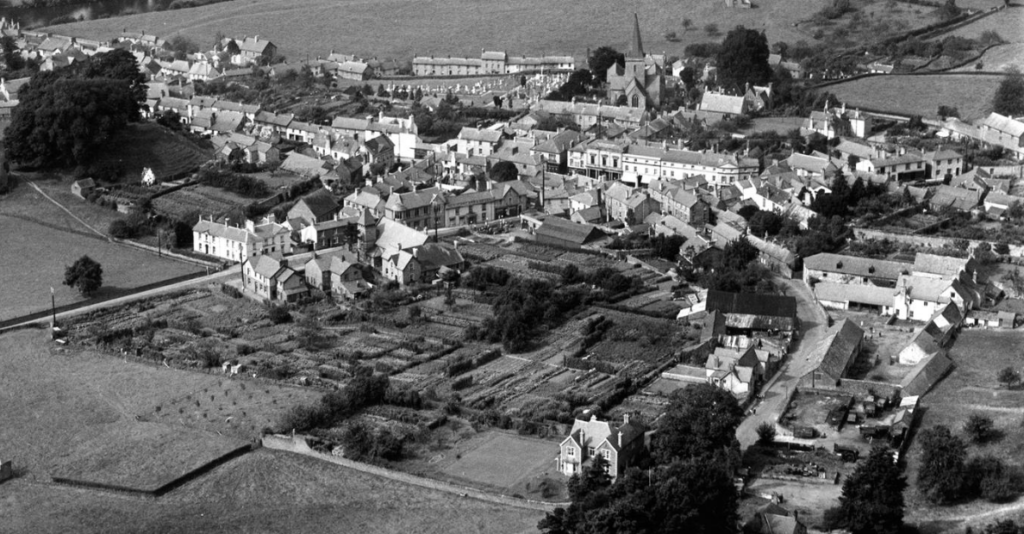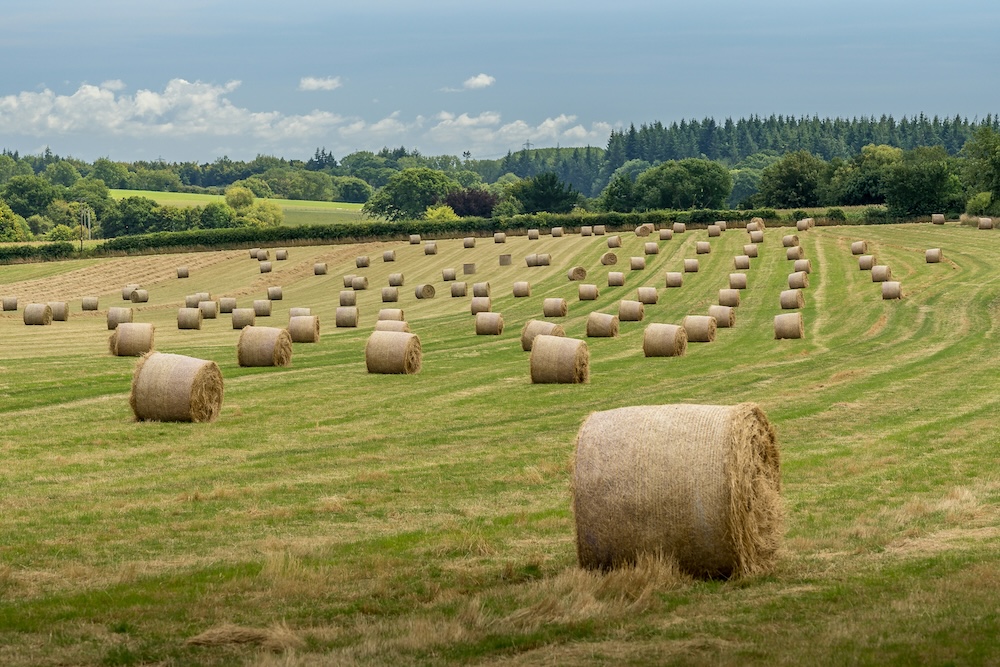Duncan Fisher, Sue Holbrook and Dianne Spencer explore the demise of fruit and vegetable farming, once widespread in Wales and how to get it back.
Small-scale fruit and vegetable farming has been all but wiped out in Wales. Government can restore it to rebuild local prosperity and wellbeing.
To do so, however, we need to address a number of thorny issues. Why has small-scale fruit and vegetable farming, which is the bedrock of any local food economy providing the weekly basics, all but disappeared in Wales? How does locally grown fruit and veg sold direct to customers end up costing more than supermarket produce? Why has food and drink consumption in a deeply rural area like Bannau Brycheiniog become its biggest source of carbon emissions, way in front of the usual suspects, home energy and driving? And finally, why are we surrounded by thousands of acres of green fields suitable for growing fruit and veg while having a waiting list of experienced farmers unable to access any of it?
The answer to these complex-sounding questions is actually simple. It is Government policy. The policy mix put in place after the Second World War aimed to improve efficiency and outputs in farming and to lower prices. This unleashed drivers that are now working against public interest – the intensification of production; the lengthening of supply chains; the concentration of power in distribution, processing and retailing; and unhealthy lifestyle changes. We now grow less food than we could and are highly dependent on imports – 46% of all we eat in UK.
There is good news to be found in this sober assessment, however! Because it means there is a straightforward solution to bringing back a vibrant local food economy: change Government policy.
On top of these economic benefits, small-scale farming brings measurable community and wellbeing benefits.
And there’s more good news within this big picture. Small-scale fruit and vegetable farming can make good money relative to the Welsh farming average net income per acre, so once Government removes the barriers, this farming could and will flourish and we will all be better off.
This change is crucial. We are deeply over-dependent on just-in-time global food systems that are wobbling and breaking, resulting in increasingly frequent gaps on supermarket shelves. It takes just days for a food shortage to generate mass panic, and only a few more days before we risk moving into conflict, social disorder and hunger. Food supply chain failures will happen at some point. We must build local capacity now to be resilient in the face of these shocks.
We have identified three Government policy changes that would allow farmers to rebuild our lost heritage – a local food economy that provides security and helps reverse climate change. In this article, we make the case that Government should stop excluding small-scale fruit and vegetable farming from the financial support that all other farming gets, an exclusion that undermines the entire local food economy. Our other two proposals will be the topic of our next article, but first we look at how much small-scale fruit and vegetable farming earns, the local economic multiplier associated with locally owned supply chains, and the wellbeing outcomes that come from supporting high-yield, small-scale commercial fruit and vegetable farming.
What smallscale farming can do for Wales
How much do farmers earn?
The net income (after paying all costs and employees, but before the farming family takes an income) from a two-acre commercial fruit and vegetable growing enterprise, operating on regenerative principles, is around £35,000-£40,000. ‘Regenerative’ means a kind of farming that purposefully pursues carbon sequestration and increased biodiversity. This figure is based on analysis of reports by the Ecological Land Cooperative (2018) and Landworkers’ Alliance (2021), and on the experience of our local grower network. This is roughly the same as the average Welsh farm net income of £34,300 (Senedd research briefing, 2022). The average size of Welsh farms is 119 acres. These averages are statistics, of course; they do not describe a particular farm. The purpose of this analysis is purely to get a perspective on the scale of the differences. Also, not all farming can be fruit and vegetables!
Innovative. Informed. Independent.
Your support can help us make Wales better.
The big difference between an average farm and the two-acre farm is that the two-acre enterprise currently receives no subsidy, while, on average, 57% of Welsh farm income is the basic payment subsidy – hardly a level playing field. The net income in both cases is (just) enough to support one family working very hard, provided they have an affordable roof over their heads. A two-acre fruit and vegetable farm requires two people working full-time and being present round the clock.
The local economic multiplier
The positive impact of growing for local markets is not, however, just measured by income generated and jobs created on the farm itself. An additional benefit is income retained within the local economy. Last year, the charity Sustain published a report, Unpicking Food Prices, showing how much farmers earn from selling their produce to supermarkets. For carrots, the grower gets 25% of the sale price, and for dessert apples, it’s 35%, in both cases, scarcely enough to cover the costs of production. In a supply chain owned by farmers, the farmers would get 100%, and the money would stay in the local economy, further multiplying its impact as it circulates.
The moment these local supply chains start to exist, they become a new market opportunity for all farms in the region, a channel for vegetables, fruit, dairy, meat and every other kind of local food. Weekly fruit and vegetables provide the engine that keeps the whole system in motion.
Community and wellbeing benefits
On top of these economic benefits, small-scale farming brings measurable community and wellbeing benefits. In Wales, these are considered to be of high value in their own right and enshrined in law through the Well-being of Future Generations Act. A local food economy based on regenerative farming has multiple benefits. It contributes to food security locally and across the nation, ready for future food supply emergencies. It employs more people in the local community, enhances community through local trading and by increasing the number of people working on the land and enhances communities’ stake in a landscape that feeds them. It locks carbon into increasingly healthy and biodiverse soils and builds nature by working in harmony with it. It offers educational, training and mental wellbeing opportunities on small farms. It also encourages healthy eating through a new supply of fresh, nutrient-dense food. Last but not least, it can also help address our current challenges: it avoids adding to water pollution, which is now so severe that new home building is currently seriously restricted across the Usk and Wye catchments; and reduces consumption of high-carbon foods by local residents.
This wide range of economic and wellbeing benefits provides a powerful case for Government to shift policy from obstructing this kind of farming to enabling it.
Once Government stops excluding small-scale growing for local markets from agricultural support, locally grown food will become cheaper than supermarket produce, and so more accessible to those on low incomes.
Stop excluding small-scale fruit and vegetable farms from agricultural subsidies
We’ve used the term, ‘small-scale fruit and vegetable farming’ deliberately here – giving it proper recognition as farming – because as it stands, in the subsidy system, this kind of commercial growing is not considered to be farming at all. Only farming over 5 hectares (12 acres) is considered real and receives subsidy, even if 2 acres earns 151 times more net income per acre than the Welsh farming average. (£37,500 from two acres without subsidy compared to £34,300 from 119 acres with 57% subsidy.) So, for the purposes of arguing our case here, we are not using terms like horticulture, market gardening or ‘community food’ (the latest Government policy initiative that goes without a budget).
The issue is that, without subsidy, the full cost of small-scale fruit and vegetable farming has to be passed on to the customer. It also pushes local growers to target upmarket customers, like tourists and restaurants, in order to make things add up.
This has led to a misleading narrative that locally grown fruit and veg is expensive and elitist. It is absolutely not. The unaffordability of healthy local food to low-income families is solely a function of what Government chooses to subsidise and what it chooses to exclude.
A subsidy for small-scale farming would require a different structure to the land-based system. In September 2020 in the welsh agenda, Chris Blake made an interesting proposal for a “feeding tariff”, based on the similar challenge faced in the energy market – the need to balance low cost, security of supply and carbon emission reduction. He proposed a levy system to stimulate local food production, as has been used in the energy market to boost renewable generation. Another possibility is to reward small-scale growing for its contribution to public goods, such as local jobs, pollution prevention, biodiversity and carbon sequestration. Existing farmers could be incentivised to allow small-scale growers to use some of their land for intensive regenerative horticulture, including providing an affordable home. Grants for employees/trainees, capital grants and incentives for public procurement would also help.
Innovative. Informed. Independent.
Your support can help us make Wales better.
Once Government stops excluding small-scale growing for local markets from agricultural support, locally grown food will become cheaper than supermarket produce, and so more accessible to those on low incomes.
The good news is that the subsidy system is currently under review. We have the chance right now to allow farming for local markets to flourish, and for a secure, affordable local food economy to re-emerge.
As food policy expert Professor Tim Lang stated recently, speaking about food security on BBC Radio 4’s The Food Programme: ‘we must relocalise our food systems’, as the more our food systems are centralised, the more they are vulnerable to wide-scale disruption. That’s why Our Food 1200 is working to rebuild the local food economy in Bannau Brycheiniog, Powys and Monmouthshire. We first wrote about the project for this publication back in June 2021 and have achieved much since then. But we have learned one key lesson: while we can bring great energy and resources for local change, we cannot succeed without Government collaboration, both local and national. In the second part of this article, we will point to other levers of action at Government’s disposal to restore our food heritage.
This article has two parts. To read more about the future of food in Wales continue reading with: Getting back our food: Let there be farms
All articles published on the welsh agenda are subject to IWA’s disclaimer. If you want to support our work tackling Wales’ key challenges, consider becoming a member.





